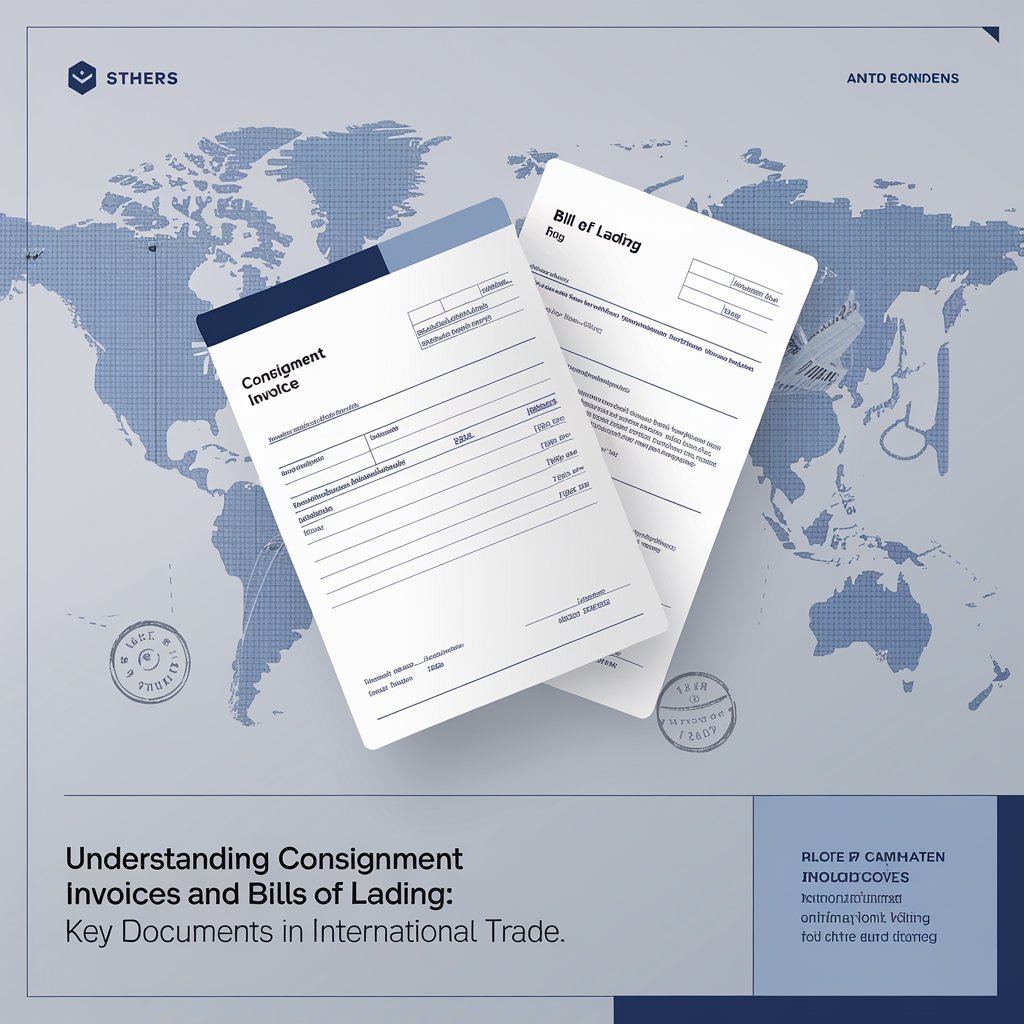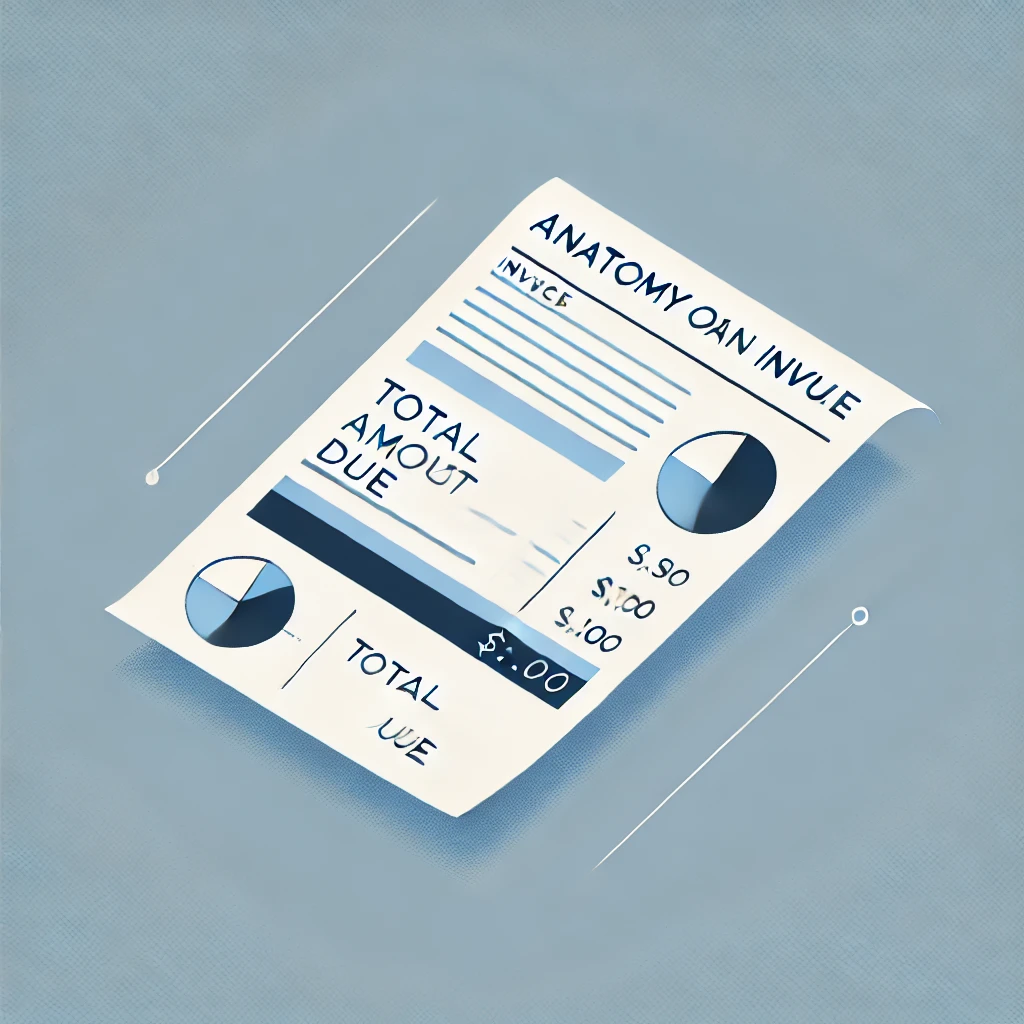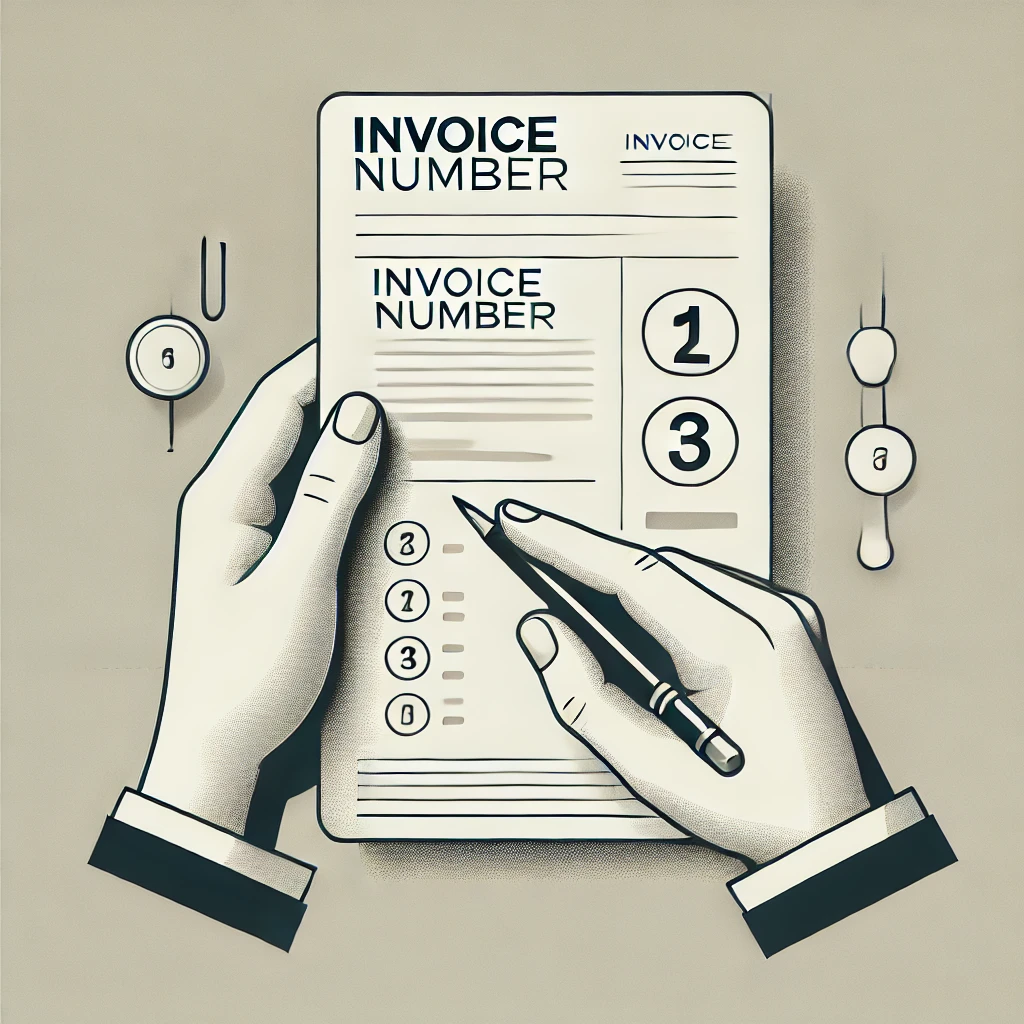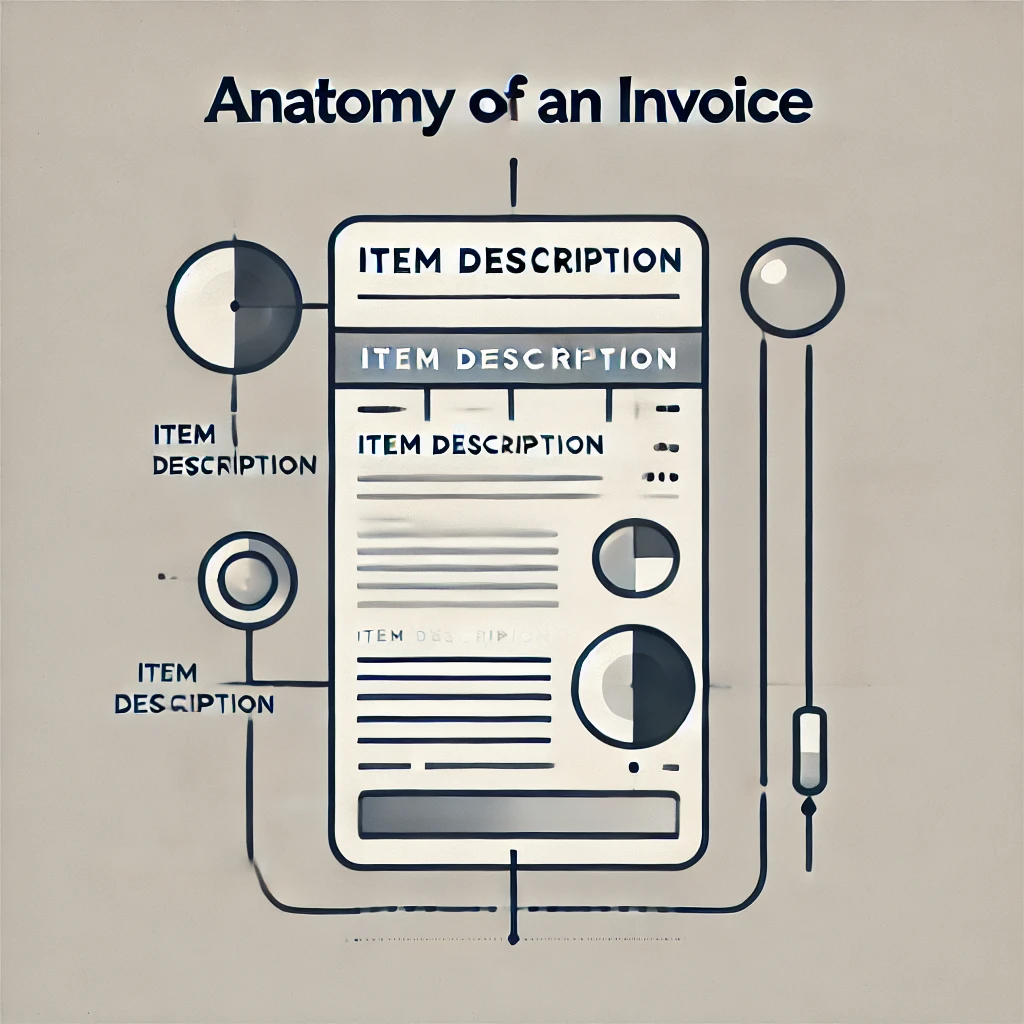What Does an Invoice Look Like?

Understanding the Basics: What is an Invoice?
An invoice is a commercial document issued by a seller to a buyer that itemizes and records a transaction between the two parties. It serves as a formal request for payment and includes details What does an invoice look like about the goods or services provided, their quantities, prices, and the total amount due.
The Anatomy of an Invoice: What Does an Invoice Look Like?
A typical invoice contains several key elements that make it a legally binding and informative document. Let’s break down the components that answer the question, “What does an invoice look like?”:
- Header:
- Your company name, logo, and contact information
- The word “INVOICE” clearly displayed
- Invoice Details:
- Invoice number (for tracking purposes)
- Date of issue
- Payment due date
- Client Information:
- Customer’s name or company name
- Billing address
- Contact person (if applicable)
- Item Description:
- Detailed list of products or services provided
- Quantity of each item
- Unit price
- Total price for each line item
- Subtotal:
- Sum of all line items before taxes or discounts
- Taxes and Discounts:
- Any applicable taxes (e.g., sales tax, VAT)
- Discounts or promotions applied
- Total Amount Due:
- The final amount the customer needs to pay
- Payment Terms and Methods:
- Accepted payment methods
- Late payment penalties (if applicable)
- Early payment discounts (if offered)
- Additional Notes:
- Any special instructions or terms of service What does an invoice look like
- Thank you message
- Footer:
- Your company’s legal information (e.g., registration number, tax ID)
Types of Invoices: Variations on the Theme
While the basic structure remains consistent, there are several types of invoices tailored to specific business needs:
- Standard Invoice: The most common type, used for straightforward transactions.
- Pro Forma Invoice: A preliminary bill of sale sent to buyers before the delivery of goods or services.
- Commercial Invoice: Used in international trade to declare the value of goods for customs purposes.
- Recurring Invoice: For regular, repeated billings (e.g., subscriptions, retainer fees).
- Credit Invoice: Issued to correct a mistake or provide a refund.
- Debit Invoice: Used to increase the amount of a previously issued invoice.
- Final Invoice: The last invoice sent for a project, summarizing all charges.
- Interim Invoice: Used for long-term projects to bill for completed portions of work.
The Importance of Proper Invoicing
Crafting clear, professional invoices is crucial for several reasons:
- Prompt Payment: Well-structured invoices facilitate quicker payments.
- Legal Protection: They serve as legal documents in case of disputes.
- Professional Image: Quality invoices reflect positively on your business.
- Financial Record-Keeping: They help in maintaining accurate financial records.
- Tax Compliance: Proper invoices are essential for tax reporting.
Common Invoicing Mistakes to Avoid
Even experienced businesses can make invoicing What does an invoice look like errors. Here are some pitfalls to watch out for:
- Incorrect or Missing Information: Double-check all details before sending.
- Unclear Payment Terms: Clearly state when and how payment is expected.
- Delayed Invoicing: Send invoices promptly to maintain cash flow.
- Unprofessional Design: Use a clean, readable format for your invoices.
- Lack of Personalization: Tailor invoices to each client when necessary.
How to Create an Invoice: Step-by-Step Guide
Creating an invoice doesn’t have to be complicated. Follow these steps:
- Choose a Template: Start with a professional invoice template or use invoicing software.
- Add Your Business Information: Include your logo, business name, and contact details.
- Insert Client Details: Accurately enter your customer’s information.
- List Items or Services: Clearly describe what you’re billing for, with quantities and prices.
- Calculate Totals: Add up line items, include taxes, and calculate the final amount.
- Specify Payment Terms: Clearly state when payment is due and accepted methods.
- Add Any Additional Notes: Include any relevant information or thank-you message.
- Review and Send: Double-check all information before sending the invoice to your client.
Invoicing Best Practices
To ensure smooth transactions and maintain professional relationships, consider these best practices:
- Be Timely: Send invoices promptly after completing work or delivering goods.
- Use Clear Language: Avoid jargon and be specific in your descriptions.
- Number Your Invoices: Use a consistent numbering system for easy tracking.
- Set Clear Payment Terms: Specify due dates and accepted payment methods.
- Follow Up: Send polite reminders for overdue payments.
- Offer Multiple Payment Options: Make it easy for clients to pay you.
- Keep Records: Maintain copies of all invoices for your records.

Digital Invoicing: The Future of Billing
In today’s digital age, electronic invoicing is becoming What does an invoice look like increasingly popular. Here’s why:
- Speed: Instant delivery to clients.
- Cost-Effective: Saves on printing and postage.
- Environmentally Friendly: Reduces paper waste.
- Easy Storage and Retrieval: Digital copies are easier to organize and find.
- Integration: Can be integrated with accounting software for streamlined processes.
Invoicing Software: Simplifying the Process
Invoicing software can significantly streamline your billing process. Here are some benefits:
- Automation: Generate invoices quickly with saved templates and client information.
- Customization: Easily tailor invoices to match your brand.
- Tracking: Monitor payment statuses and send automatic reminders.
- Reporting: Generate financial reports for better business insights.
- Cloud Access: Create and send invoices from anywhere with internet access.

Introducing Linbis Invoice Simple: Your Invoicing Solution
Linbis Invoice Simple is a user-friendly invoicing tool designed to make billing effortless for businesses of all sizes. Here’s how What does an invoice look likeLinbis can revolutionize your invoicing process:
Key Features of Linbis Invoice Simple:
- Intuitive Interface: Easy-to-use dashboard for quick invoice creation.
- Customizable Templates: Professionally designed templates that you can tailor to your brand.
- Automatic Calculations: Let Linbis handle the math, reducing errors in totals and taxes.
- Client Management: Store and manage client information for faster invoicing.
- Multi-Currency Support: Create invoices in different currencies for international clients.
- Recurring Invoices: Set up automatic billing for repeat clients or subscription services.
- Payment Integration: Accept online payments directly through your invoices.
- Mobile App: Create and send invoices on-the-go with the Linbis mobile application.
- Reporting Tools: Generate financial reports to track your business performance.
- Cloud Storage: Securely store and access your invoices from anywhere.
How to Create a Simple Invoice with Linbis:
- Sign Up: Create your Linbis account (free trial available).
- Choose a Template: Select from a variety of professional templates.
- Add Your Details: Input your business information and logo.
- Enter Client Information: Add your client’s details or select from saved contacts.
- Input Line Items: List your products or services with prices and quantities.
- Set Terms: Specify payment terms and due dates.
- Preview and Customize: Review your invoice and make any necessary adjustments.
- Send: Email the invoice directly to your client through Linbis.
Benefits of Using Linbis Invoice Simple:
- Time-Saving: Create professional invoices in minutes.
- Error Reduction: Automated calculations minimize mistakes.
- Professional Appearance: Impress clients with sleek, branded invoices.
- Improved Cash Flow: Faster invoicing and payment tracking lead to quicker payments.
- Scalability: Suitable for businesses from freelancers to large corporations.

Legal Considerations in Invoicing
Understanding the legal aspects What does an invoice look like of invoicing is crucial for businesses:
- Tax Compliance: Ensure your invoices meet tax authority requirements.
- Record Keeping: Maintain invoice records as required by law (usually 3-7 years).
- Privacy Laws: Handle client information in compliance with data protection regulations.
- Contract Terms: Ensure your invoices align with any contractual agreements.
- Digital Signatures: Consider using electronic signatures for added security and validity.
Invoicing Across Borders: International Considerations
For businesses dealing with international clients, keep these points in mind:
- Currency Conversion: Clearly state the currency and any conversion rates used.
- VAT and Taxes: Understand the tax implications of international transactions.
- Language: Consider providing invoices in the client’s language for clarity.
- Payment Methods: Offer international payment options suitable for your client’s region.
- Customs Information: Include necessary details for shipments crossing borders.
The Future of Invoicing: Trends to Watch
As technology evolves, so does invoicing. Here are some trends shaping the future of billing:
- Blockchain Invoicing: Increased security and transparency in transactions.
- AI-Powered Systems: Automated invoice processing and anomaly detection.
- Real-Time Invoicing: Instant billing at the point of sale or service completion.
- Mobile-First Approaches: More businesses creating and managing invoices via smartphones.
- Integration with IoT: Automated invoicing based on usage data from connected devices.
Conclusion: Mastering the Art of Invoicing
Understanding what an invoice looks like and how to create one effectively is a fundamental skill for any business owner. From the basic structure to advanced digital solutions like Linbis Invoice Simple, mastering invoicing can significantly improve your business operations, cash flow, and professional image.
Remember, an invoice is more than just a request for payment—it’s a representation of your business’s professionalism and attention to detail. By following the guidelines outlined in this comprehensive guide and leveraging tools like Linbis Invoice Simple, you can create invoices that not only look professional but also facilitate smooth, timely transactions with your clients.
Whether you’re just starting out or looking to streamline your existing invoicing process, the key is to stay organized, be clear in your communication, and leverage technology to What does an invoice look like your advantage. With practice and the right tools, you’ll soon become an invoicing expert, ensuring that your business maintains a healthy cash flow and strong client relationships.
